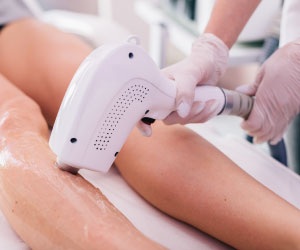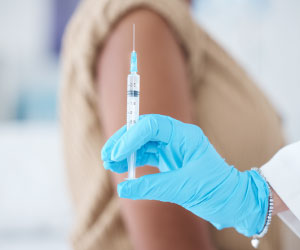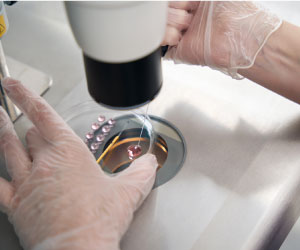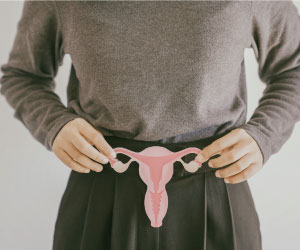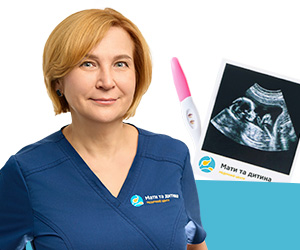Noninvasive prenatal testing
What is the noninvasive prenatal test
Noninvasive prenatal test, NIPT is a genetic test to detect chromosomal abnormalities in the fetus. The blood of a pregnant woman is used for the analysis, so the test is called noninvasive, which means that there is no penetration into the uterus. In this way, NIPT differs from invasive genetic diagnostics, which require cells from the fetus, umbilical cord blood, or placenta. Another difference is that NIPT does not determine a diagnosis, only a probability.
What does NIPT reveal?
NIPT determines the risk of chromosomal abnormalities in the fetus, for example, Down syndrome. In addition, the test accurately determines the sex of the fetus, which is important for sex-linked hereditary pathology. Some chromosomal diseases are caused by a mutation in the X or Y chromosome. For example, if the disease is transmitted through the Y chromosome, which is only found in boys, the birth of a girl will eliminate the risk of transmission.
NIPT test detects the most frequent chromosomal diseases:
- Down syndrome, or trisomy 21 chromosomes (trisomy is three chromosomes instead of two).
- Edwards syndrome, or trisomy on chromosome 18.
- Patau syndrome, or trisomy on chromosome 13.
- Chromosomal abnormalities in sex chromosomes: Klinefelter's syndrome, Turner's syndrome, trisomy X, etc.
NIPT cannot determine the probability of other relatively common genetic pathologies - sickle cell anemia, thalassemia, cystic fibrosis.
The full list of possible abnormalities that the NIPT test can show varies depending on the method used by a particular laboratory, so the list should be clarified in advance.
When is there a need for NIPT?
Every woman should undergo two screening examinations during pregnancy, one at the end of the first trimester and the other in the middle of the second. They include ultrasound and biochemical blood tests that detect markers of some congenital anomalies, the most common of which is Down syndrome. The screening of the first semester reveals the risk, the screening of the second confirms or denies it. The problem is that their accuracy is not high enough. NIPT is a more accurate study, so it is used when there is reason to suspect chromosomal abnormalities in the future child after the first or first and second screening.
Other indications:
- The woman missed screenings (they should be performed at a certain time, since later biochemical markers cease to be informative).
- The age of the pregnant woman is over 35 years, so, having a high risk of chromosomal mutations, she does not want to rely on the results of the screening.
- The family already has children with hereditary pathology.
What is the accuracy of NIPT?
Noninvasive prenatal test is accurate in determining gender and Down syndrome. High-precision NIPT detects Down syndrome in 99% of all cases, but the accuracy for other chromosomal diseases is slightly lower, although higher, than prenatal screening. Compared to them, NIPT has fewer false-positive responses.
NIPT results may be less accurate in multiple pregnancies, obesity, or when a woman is carrying a genetically different child (surrogate motherhood).
But in general, NIPT reviews are positive. If previously the American Society of Obstetricians recommended this test only to women who entered the high-risk group after screening, now the recommendations are extended to others, in particular to the low-risk group. However, it has not yet been included in the mandatory diagnostic program either in America or in Ukraine. This means that NIPT is not performed free, that is, it is not paid for by the state. The answer to the questions "NIPT test price" and "NIPT analysis price" depends on the specific laboratory. In Ukraine, the cost of such test varies widely — from UAH 10 000 to UAH 20 000 or more, depending on the method.
How is NIPT done?
The reason for the test was the information that a certain amount of genetic material (DNA) of the fetus circulates in the blood of a pregnant woman. These are DNA fragments from destroyed cells that have entered the bloodstream. They are called extracellular DNA.
For the test, blood is taken from a vein from a pregnant woman, in the same way as for other blood tests. Then the sample goes to the laboratory, where it is processed, isolated and carefully studied for the extracellular DNA of the fetus.
The mother's blood contains very little of the baby's DNA, so it takes at least 10 weeks to accumulate enough for testing. Before 10 weeks of gestation, NIPT was not performed. But this is quite early, because, for example, the screening of the first trimester is performed at 11-13 weeks. The term is especially important if a high risk is confirmed and the woman decides not to keep the pregnancy.
Evaluation of results
NIPT does not give a clear answer whether there is a specific pathology or not. It shows the level of risk. For example: the risk of trisomy 21 is high, and the risk of trisomy 18 and 13 is low. Or low risk for all aneuploidy. What to do then with the information received is up to future parents. If there is no risk, everything is clear here, everyone sighs with relief. If there is a risk, the options are:
- No more tests, trust fate.
- Make an invasive prenatal examination that will dispel doubts.
- Make a decision to maintain or terminate a pregnancy based on NIPT results.
Methods of invasive prenatal diagnosis include amniocentesis, umbilical cord blood analysis, and chorionic villus biopsy. Why are they not used immediately? The fact is that, unlike screenings and NIPT, which do not carry any risk, invasive diagnostics involves penetration into the uterine cavity. This means that there is a risk for pregnancy. Interruption is rare, but it cannot be ruled out. Therefore, invasive prenatal diagnosis, which gives an accurate answer, is resorted to only if there are justified suspicions.
Sometimes the laboratory answers that the test cannot be performed due to insufficient amount of extracellular DNA or problems with its identification. Then the test must be repeated.



























